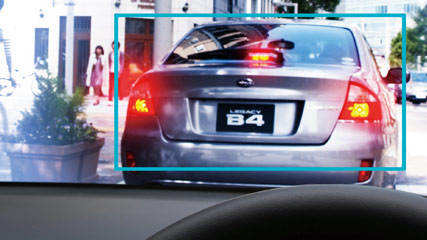Lotus Exige 2006 News

Subaru cameras replicate eyesight
Read the article
By Neil McDonald · 27 May 2010
Called Eyesight, the idiot-proof high-tech safety system is currently being tested by Subaru Australia. It is expected to be rolled out locally next year on high-end Liberty/Outback models.
The Subaru device is similar to Volvo's City Safety in its ability to recognise potential road hazards and alert the driver. However, unlike Volvo's system, Subaru uses two cameras located near the rear view mirror rather than a laser.
"The reason it's called Eyesight is because the stereo cameras replicate human eyesight," according to Subaru Australia technical services manager, Derek Ashby. Its inventors say the cameras are better able to recognise the complex road environment, from white lines, to barriers, people and bicycles.
Eyesight can avoid frontal collisions, lane drifting and low-speed impacts. It is currently available in Liberty, Outback and Exiga models in Japan for about $1200. Like humans, the system requires clear weather to work properly.
In rain or bright direct sunlight its performance is diminished. "It needs clear vision just as people do," Ashby says.
Subaru has been testing a third-generation version here for the past nine months to program more local driving conditions into it. They have towed a caravan with it and driven the Outback test car extensively on dirt roads.
Eyesight's two digital cameras feed information into a micro-processor above the windscreen. It locks on to any vehicle in front and when used with the adaptive cruise control, will slow, stop or accelerate the car.
Like City Safety, it will also apply the brakes in stop-start traffic to prevent crashing into the back of other vehicles. Other party tricks include lane departure warning and sway warning. It will also stop a driver from accidentally driving into a carpark wall if they accident hit the accelerator instead of the brake, even if a forward gear is engaged.
The system will also beep at inattentive drivers to let them know the vehicle in front has moved away from traffic lights or an intersection. A pre-crash function will brake the car to a complete stop below 30km/h to avoid low-speed collisions.
Subaru also says it will also work at speeds above 30km/h and up to 50km/h with minimal damage. Eyesight has been developed in conjunction with Hitachi.

Lotus hots up the stands
Read the article
By CarsGuide team · 12 Oct 2007
Clad in vinyl and leather, the dozen girls on the stand could not avert (too many) eyes from the sculpted bodies of the two new Lotus recruits.
Today saw the World debut of the Sport 240, a tricked-up Exige S with every racing modification a production car could offer.
Specced by Lotus Cars Australia but built in Lotus Sport’s Hethel plant in England, only six bespoke 240s will make the southern journey for a landed price of $149,990.
Three cars are branded with orange highlights on a black body, and the inverse is also available as an orange car with black splitter, spoiler and wheels.
The supercharged Exige S powerplant is tuned further to produce 179kW, or 10 per cent more than the standard car. It is also given a limited slip diff (LSD), AP racing brakes, forged OZ alloys, launch control, and some go-fast body bits befitting a track-pack production car.
The Sport 240 features another first for a car in this category; an 18-stage traction control system similar to those found in Formula One machines. While the theory is borrowed from F1, the actual technology is taken straight from Lotus’s newest track car, the 2-Eleven
This is an extreme car, even for Lotus. Underneath it all, the wedge-on-wheels is actually also an Exige S; but without a roof; doors; even a windscreen. What it does have is 9kW more than the Sport 240 at 188kW, but even less weight at 745kg.
It shares much of the same race-bred goodies, from the LSD to the brake package to the two-tone sports seats.
The figures on paper are almost as impressive; 188kW at 8000rpm, 242Nm at an equally high 7000rpm, 0-100km/h in 3.9seconds (claimed), and a top speed of just under 250km/h.
The 2-Eleven is not as exclusive as the Sport 240, with 100 cars built every year for a global market. But it is more affordable at $127,500. Bring the credit card; or make your significant other take it from you before you visit the Australian International Motor Show.




